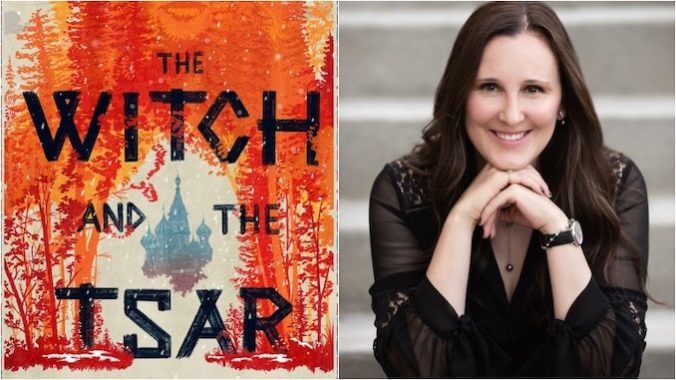Olesya Salnikova Gilmore Talks Reinventing Baba Yaga In The Witch and the Tsar
(Photo: Nicola Levine Photography, LLC 2021)
When we hear the name “Baba Yaga”, we tend to conjure up specific mental images: a deformed, physically repulsive old woman, she’s traditionally depicted as a monster or deployed as a cautionary tale. But whether she’s depicted as a dangerous, duplicitous witch who steals and eats children or simply used as a convenient threat to cow unruly youngsters (“Don’t do that or Baba Yaga will get you!”), few stories involving Baba Yaga are terribly interested in who she is or where she comes from.
But thanks to debut author Olesya Salnikova Gilmore—and a popular recent trend in publishing that’s working to both reevaluate and reframe the stories of some of the most vicious and villainous women in folklore and legend—that’s certainly no longer the case. Her novel The Witch and the Tsar put her half-human, half-immortal Yaga Mokoshevnasquarely at the center of her own story, and gives her what honestly feels like an unprecedented amount of interiority and agency.
Setting her version of the story in sixteenth-century Russia and blending historical fact alongside mythological fiction, Gilmore makes her tale as much about the way our society has constantly striven to undermine and ostracize women who are different, who dare wield power of their own lives in untraditional ways, and who speak out against the patriarchy that would otherwise oppress them.
We got the chance to chat with Gilmore about what drew her to Baba Yaga in the first place, her research into the world of medieval Russian history, how she incorporated other familiar figures from folklore into her story, and lots more.
![]()
Paste Magazine: The Witch and the Tsar is a Baba Yaga retelling that definitely pushes back against many of the prevalent ideas in popular culture of who this figure is. What is it about this character that you find so fascinating or that spurred you to want to tell her story in a different way?
Olesya Salnikova Gilmore: Baba Yaga was a major—sometimes, very real—presence in my childhood, which was spent in Moscow, Russia before my family moved to the U.S. My mother would evoke her name when I misbehaved, which was a lot. And eventually, my fear of her turned into fascination. The fairy tale Baba Yaga is an elusive character, both good and bad, a donor and a villain, a single woman, and a mother. I often found myself asking, Who, exactly, is Baba Yaga, and where did she come from? Surely, she isn’t just the fearsome ugly hag from the tales, frequently shown there as a figure of ridicule and sexist contempt, a caricature, a joke.
During my research, I discovered that many scholars believe the Baba Yaga we know is based on a fertility and earth goddess—or her descendent—worshipped by ancient pagan Slavs long ago. I instantly became interested in the concept of how a goddess was turned into a witch, deciding to reframe the story of Baba Yaga by imagining what she could have been like if she was a goddess and a human woman both, before gossip and rumor had reduced her to a silly old crone. And I would call her simply Yaga.
Paste: How would you describe Yaga’s journey over the course of this story?
While the novel focuses on Yaga’s fight against Tsar Ivan the Terrible and the gods who seek to manipulate him, her journey is one of self-discovery and origins first. It is her personal search for identity, purpose, belonging, even love, as a goddess and a woman—in a society that has chosen to see her only as a witch.
Paste: What made you want to weave Yaga’s story into the historical reign of Ivan the Terrible?
-

-

-

-

-

-

-

-

-

-

-

-

-

-

-

-

-

-

-

-

-

-

-

-

-

-

-

-

-

-

-

-

-

-

-

-

-

-

-

-








































